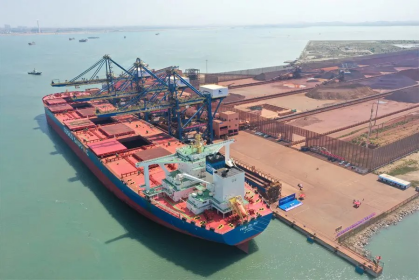In international shipping, in addition to the common container ships, break bulk carriers and ro-ro vessels are also used to transport some goods that are not suitable for container transport, and the capacity of bulk carriers also accounts for about 43% of the global fleet capacity. In this article I will introduce the break bulk carriers.
What is break bulk carrier?
A ship designed to carry bulk cargoes without packaging (carrying bulk materials such as coal, ore, grain, fertiliser, cement, steel, etc.).
Types of bulk carriers:
Depending on the type of cargo carried, they can be divided into Grain Ship, Collier, Ore Ship, Bulk Cement Ship, Logs Carrier, Pulp Carrier.
Rates for bulk carriers:
Ocean freight charges for bulk carriers are calculated on a per RT (Revenue Tons) basis by comparing the volumetric weight with the gross weight and charging the greater, calculated as 1 tonne = 1 cubic metre.
In the case of oversized cargo (e.g. large machinery, yachts, etc.), the charge will be per bill.
Advantages and disadvantages of bulk carriers:
Advantages: large loading capacity, ability to carry extra-long, extra-heavy items.
Disadvantages: Slow loading and unloading speed, long ship time, few ports of call
Shipping company of bulk carrier:
G2 OCEAN, SAGA WELCO, BBC CHARTERING, CSSCC, etc.
Required information for quotation:
Description of goods
Size
Gross Weight
Port of loading and port of destination
Written by Mario
